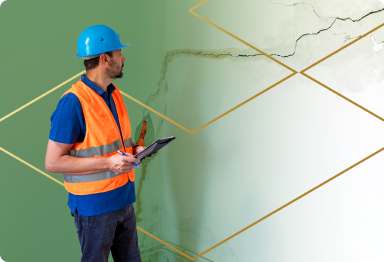Are you entitled to an Alucobond payout?
Posted 11 October 2024
Category: Building Defects
Did you know that the hearing for this class action filed more than five years ago has commenced on 26 August 2024.
The hearing between groups of individuals and entities with proprietary interests in buildings that have Alucobond PE cladding products installed and the manufacturers of those panels (3A Composites and Halifax Vogel Group) was listed for two months in the Federal Court of Australia and is more than halfway through.
If your building was fitted with Alucobond panels between February 2009 and February 2019 it may be eligible to opt in to this class action.
The thing to understand about a class action is that it is a representative action, and you are represented in these proceedings if your building is retrofitted with the products in question.
To opt into the Alucobond panels class action, your building must meet specific criteria regarding the type of cladding installed. Here are the key points:
Eligibility Criteria
Additional Information
- The class action seeks compensation for various costs related to the removal and replacement of the cladding, increases in insurance premiums, and other associated expenses due to the alleged fire risks posed by these materials.
- Registration to opt in can be done through designated channels provided by the class action representatives which can be found here: https://portal.omnibridgeway.com/cases/register/combustible-cladding-class-action-overview.
- If your building meets these criteria, you may be eligible to participate in the class action against the manufacturers of Alucobond products.
Summary of some of the particulars of the case
A class action trial in Australia has raised serious concerns regarding the safety of Alucobond cladding panels produced by 3A Composites and supplied by Halifax Vogel Group. The William Robert Lawyers-led class action asserts that the Alucobond cladding panels are highly flammable and comparable to petrol in terms of their combustibility. Class action barrister Ian Robert SC (Roberts) described the panels, which consist of an aluminium coating and a polyethylene core, as “wholly unsuitable” for use as cladding, presenting an “unacceptable fire risk” that could lead to catastrophic outcomes in the event of a fire.
The class action is spearheaded by The Owners – Strata Plan No 87231, representing numerous buildings fitted with Alucobond panels between February 2009 and February 2019. The plaintiffs are seeking damages that include the costs of replacing the cladding with safer materials and any associated expenses necessary to ensure fire safety. They argue that the cladding’s flammable properties significantly increase the risk of fire, damage and loss of life.
Roberts highlighted the alarming calorific value of polyethylene, a key component of the cladding, which is approximately 46 megajoules per kilogram—similar to that of petrol. This property not only enhances the claddings combustibility but also enables fires to spread rapidly across building facades, undermining fundamental fire safety principles intended to contain fires within designated areas. Roberts argued that the cladding possessed the distinctive capability to “burn in all directions” instead of just moving upwards, as is typical for fires and that this characteristic could lead to a potentially “lethal effect,” enabling debris to fall and facilitate a fire spread both vertically and horizontally.
A testimony from a firefighter further illustrated the dangers posed by Alucobond cladding. The firefighter recounted his experience responding to a fire at the Lacrosse building in Melbourne, stating he had never witnessed such rapid fire spread in his 30-year career. This testimony supports claims that the cladding poses an “insurmountable challenge” for fire containment efforts.
The class action also alleges that 3A Composites and Halifax engaged in misleading advertising regarding the safety of their products. Despite claims that aluminium cover sheets provide protection against fire risks, Roberts countered that aluminium melts at lower temperatures than those typically encountered in cladding fires, rendering such assurances ineffective.
This trial follows other significant legal actions related to combustible cladding in Australia, including a similar case against Fairview Architectural after major fires highlighted the dangers of polyethylene core cladding in buildings like Grenfell Tower in London.
Building Defects Advice
Strata committees & lot owners
Related articles
Combustible Cladding, Class Actions & Australian Consumer Law
Building Defects: Who Pays?
***The information contained in this article is general information only and not legal advice. The currency, accuracy and completeness of this article (and its contents) should be checked by obtaining independent legal advice before you take any action or otherwise rely upon its contents in any way.
